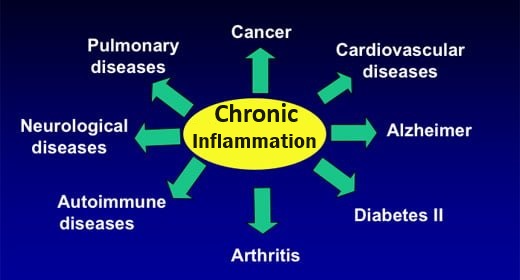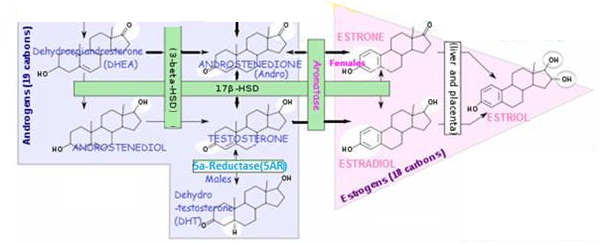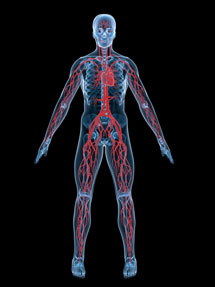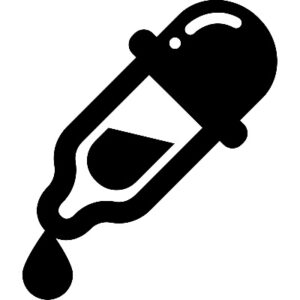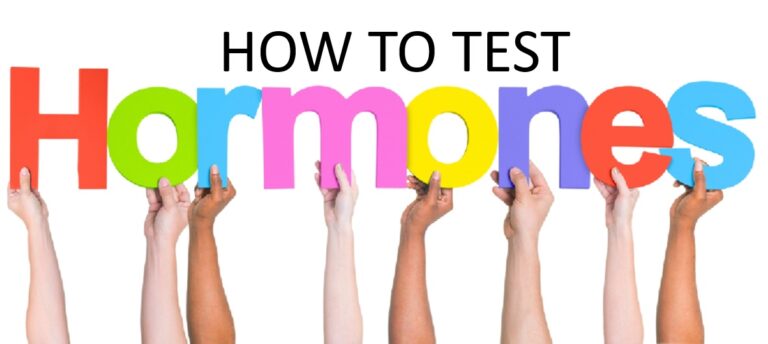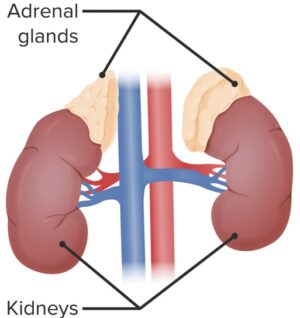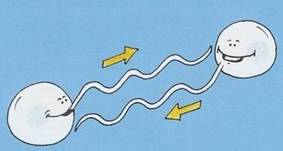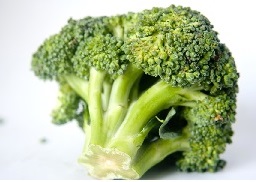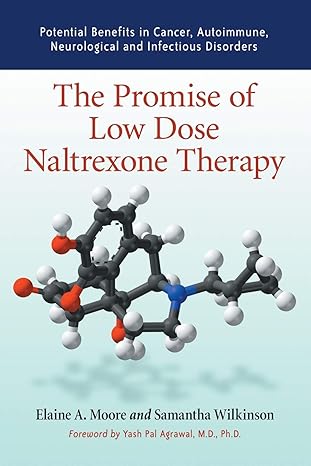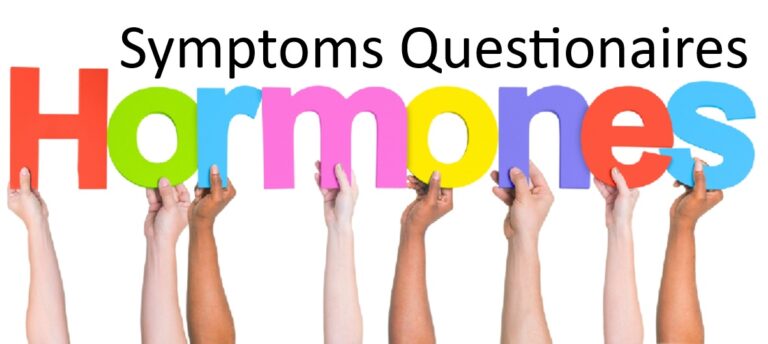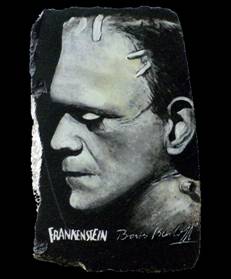Sex steroid hormones- "Your body is not your own!"
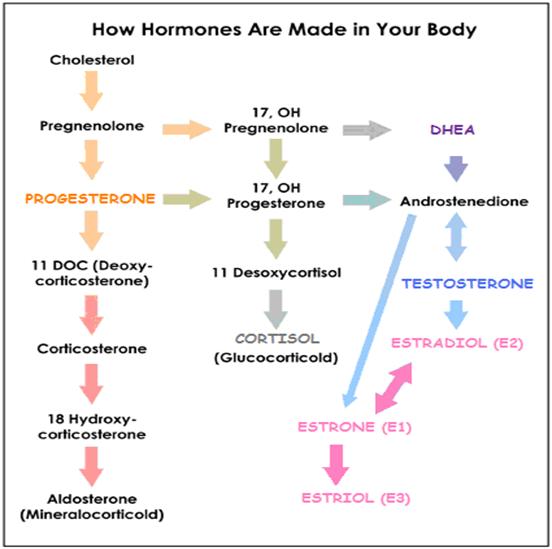
What are sex steroid hormones?
- ENDOCRINE hormones are chemical “messengers” used for intercellular communication, released by glands directly into the bloodstream. There are 3 types of endocrine hormones, namely, amines, polypeptides, steroid hormones.
Hormones 101 – “Feel Good, Look Good”
- STEROID hormones (subset of endocrine hormones) are fat-soluble hormones produced from cholesterol. They include: glucocorticoids, mineralocorticoids, sex steroid hormones and vitamin D sterols
- SEX STEROID HORMONES (subset of steroid hormones) produce sex differences or support reproduction. These are the:
- Androgens – include: DHEA, ANDROSTENEDIONE, TESTOSTERONE, DHT
- Estrogens – include: ESTRADIOL, ESTRONE, ESTRIOL
- Progestagens.– include: PROGESTERONE (precursor to Androgens, Estrogens and Corticoids), PREGNENOLONE

Where are the sex steroids produced?
- All steroid hormones are produced / secreted by the ovaries (ovarian follicle /Corpus luteum), testes, prostate, and adrenal cortex. In addition, further conversions, break-downs and secretions occur inthe liver, extragonadal sites(E.g. adipose tissue, skin fibroblasts, bone, placenta) and in other target tissues.
- Production requires certain enzymes

Effects of sex steroid hormones
Steroid sex hormones are largely ignored until we hit puberty. But then, as these hormones “kick in”, your body is no longer your own! 🙂 . . .
- Physical changes – pimples, pubic hair,girls’breasts swell and hips become rounder, boys’facial hair begins to grow and their voices become deeper
- Weight Maintenance becomes an issue –sex steroids are involved in adipogenesis (fat formation)
- Emotions run high – angst, anger, confusion, depression, strong sexual urges.
- PMS – at certain times of the month you have irrational feelings. E.g. feel weepy, have cravings, snap at people.
- Pregnancy – Cravings, breast tenderness, weight gain, feeling tired, heightened sexual feelings, depression, an acute sense of smell, nausea, gray hair, straight hair gone curly, curly hair gone straight.
- Cardiovascular disease;
- Neurodegenerative disease
- Cancer formation
- Bone formation

Sex steroid bioavailability
Alcohol consumption affects serum levels of some sex steroid hormones
Study investigated the relationships between alcohol consumption and serum levels of sex steroids in women. TESTOSTERONE (T), ANDROSTENEDIONE (A4), DEHYDROEPIANDROSTERONE sulphate (DHEAS), ESTRONE (E1), ESTRADIOL (E2) and sex-hormone binding globulin (SHBG) in 790 pre- and 1,291 post-menopausal women, who were part of the European Prospective Investigation into Cancer and Nutrition (EPIC). Results supported the hypothesis of an influence of alcohol intake on sex hormone concentrations in blood:
- Pre-menopausal women. Those who consumed more than 25 g/day of alcohol had about 30% higher DHEAS, T and free T (fT), 20% higher ANDROSTENEDIONE and about 40% higher E1, concentrations compared to women who were non-consumers. E2, fE2 and SHBG concentrations showed no association with current alcohol intake.
- Post-menopausal women. Concentrations of DHEAS, fT, T, ANDROSTENEDIONE, and ESTRONE were between 10% and 20% higher in women who consumed more than 25 g/day of alcohol compared to non-consumers. E2 or fE2 were not associated with alcohol intake at all. SHBG levels were about 15% lower in alcohol consumers compared to non-consumers.
Rinaldi S et al, Relationship of alcohol intake and sex steroid concentrations in blood in pre- and post-menopausal women: the European Prospective Investigation into Cancer and Nutrition. Cancer Causes Control. 2006 Oct;17(8):1033-43. PubMed
In the U.S. 1 standard drink contains ~14g alcohol. E.g. 12oz beer, 5oz wine, 1.5oz spirit.
Men’s ESTRADIOL (E2) levels are significantly elevated proportional to their blood alcohol levels after drinking alcohol and speed of consumption. May be related to estrogenic content of beer and wine, and may account for feminization with chronic alcohol abuse. Catharina J.Th. Couwenbergs (1988) Acute effects of drinking beer or wine on the steroid hormones of healthy men, Journal of Steroid Biochemistry, Volume 31, Issue 4, Part 1 Pages 467-473 Link

Hormone-binding carrier proteins make sex steroid hormones less bioavailable
Only free / unbound circulating hormones are biologically active
Most sex steroid hormones are bound to carrier proteins to make them water-soluble in the blood. This leaves only a small fraction that circulates “free” / unbound
- Bioavailability of ESTRADIOL or TESTOSTERONE is determined by level of Sex hormone binding globulin (SHBG, aka. TeBG (TESTOSTERONE–estrogen Binding Globulin)
Sex hormone-binding globulin (SHBG; aka. TeBG (TESTOSTERONE–estrogen binding globulin)
Bioavailability of ESTRADIOL or TESTOSTERONE is determined by the level of SHBG binding them in circulation. ESTRADIOL and TESTOSTERONE travel in the blood either strongly (but reversibly) bound to SHBG (ESTRADIOL 40%) or loosely bound to serum albumin (ESTRADIOL 59%).E.g. Only about 1-2% of circulating ESTRADIOL is “free” to enter a cell and activate its receptor.
SBGH level is delicately balanced by enhancing and inhibiting factors:
SHBG is ▲ increased by: (makes otherwise unbound hormones LESS bioavailable)
- Liver disease, alcohol
- Hyperthyroidism – high levels of thyroxine (T3)
- Anorexia
- High levels of estrogen – E.g. use of HRT, oral contraceptives (metabolized by liver);
- High levels of GROWTH HORMONE
SHBG is ▼ reduced by: (makes otherwise bound hormones MORE bioavailable)
- Higher circulating INSULIN levels – (note however, that recent evidence reveals that liver’s fat production reduces SHBG, and not any direct effect of INSULIN);
- Obesity – obesity leads to high insulin levels, which causes a reduction in the liver’s productionand circulating levels of SHBG (see note above); note that obesity also increases estrogen production in adipose cells via the aromatase enzyme; Thus, obesity can promote cancers such as breast and endometrial cancer -as estrogen becomes more bioavailable (free/unbound to SHBG) for its target tissues.
- Hypothyroidism;
- Androgens;
- Corticosteroid-binding globulin (CBG)
- INSULIN-LIKE GROWTH FACTOR-1(IGF-1)
- Cushing’s disease;
- Soy – up to 10% reduction;
- Nettle root – contains compounds that bind to SHBG; nettle root is also anti-aromatase and therefore acts against estrogen production.
High/Low SHBG Conditions
- Low SHBG (making hormones MORE bioavailable) seen in polycystic ovary syndrome, diabetes, hypothyroidism.
- High SHBG(making hormones LESS bioavailable) – seen in pregnancy, hyperthyroidism, anorexia nervosa. Recent research links high SHBG levels with breast and testicular cancer.
SHBG production sites
- SHBG is produced mainly in the liver cells and released into the bloodstream – other production sites are the brain, uterus, placenta and testes (where it is sometimes called androgen-binding protein).
Corticosteroid-binding Globulin (CBG, a.k.a. transcortin)
Bioavailability of PROGESTERONE and CORTISOL (and other corticosteroids) is determined by level of Corticosteroid-binding protein (CBG) binding them in circulation. . Clinical Reproductive medicine and surgery, 2007
- PROGESTERONE is bound by CBG (~18%), albumin (~80%), SHBG (0.6%) and ~2% exists in the free state
CBG level is balanced by enhancing and inhibiting factors:
CBG is ▲ increased by: (makes otherwise unbound hormones LESS bioavailable)
- Estrogens / Pregnancy
CBG is ▼ reduced by: (makes otherwise bound hormones MORE bioavailable)
- Cirrhosis (chronic liver disease);
- Alcohol
CBG production
- CBG is produced by the liver












